
The Richest Countries In South America 2025
Home to 12 sovereign states, South America ranks fourth in nominal GDP among the continents, following Asia, North America, and Europe. Although the continent has faced numerous challenges over the years due to factors like European Colonization, political corruption, and government unrest, many of the countries have been implementing economic reforms, diversifying their industries, and expanding trade agreements to strengthen their economies and improve overall quality of life.
Below is a closer look at the ten South American countries with the highest GDP per capita (PPP) in 2025, based on IMF data. Guyana ranks first at $94,189, followed by Uruguay at $37,190 and Chile at $35,286. Each entry highlights how factors like political conditions, industrial diversity, and climate challenges influence economic performance.
10 Richest Countries in South America
| Rank | Country | GDP/Capita (PPP) |
|---|---|---|
| 1 | Guyana | $94,189.30 |
| 2 | Uruguay | $37,190.13 |
| 3 | Chile | $35,286.47 |
| 4 | Argentina | $31,311.01 |
| 5 | Brazil | $23,309.63 |
| 6 | Colombia | $22,396.00 |
| 7 | Suriname | $22,303.23 |
| 8 | Paraguay | $19,717.19 |
| 9 | Peru | $18,980.19 |
| 10 | Ecuador | $16,805.02 |
Jump to the list of all South American countries ranked by GDP/Capita (PPP)
1. Guyana - $94,189 GDP/Capita (PPP)
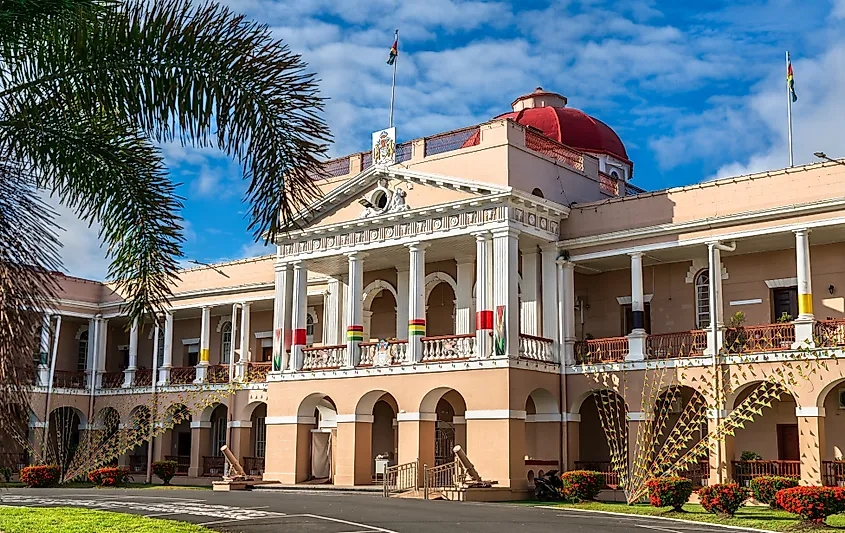
Guyana leads South America in GDP per capita (PPP), reaching $94,189, largely driven by its oil reserves. In 2015, the country experienced a radical transformation after discovering a massive offshore oil field. In the subsequent years, 17 additional oil fields were found, projecting the production of around 750,000 barrels of oil by 2025. Although Guyana has historically had one of the lowest GDP per capita on the continent, the oil field discoveries have resulted in rapid economic growth, making it one of the fastest-developing economies in the world. Poverty has also been on the decline in recent decades, decreasing from 60.9% in 2006 to 48.4% in 2019. More recent data regarding poverty is not currently available.
Despite recent progress, diversifying Guyana's economy continues to be a challenge. As of 2022, oil accounted for 88% of total exports, while nearly 90% of non-oil exports consisted of sugar, gold, bauxite, shrimp, timber, and rice. As a result, the economy remains largely dependent on mining and agriculture.
2. Uruguay - $37,190 GDP/Capita (PPP)
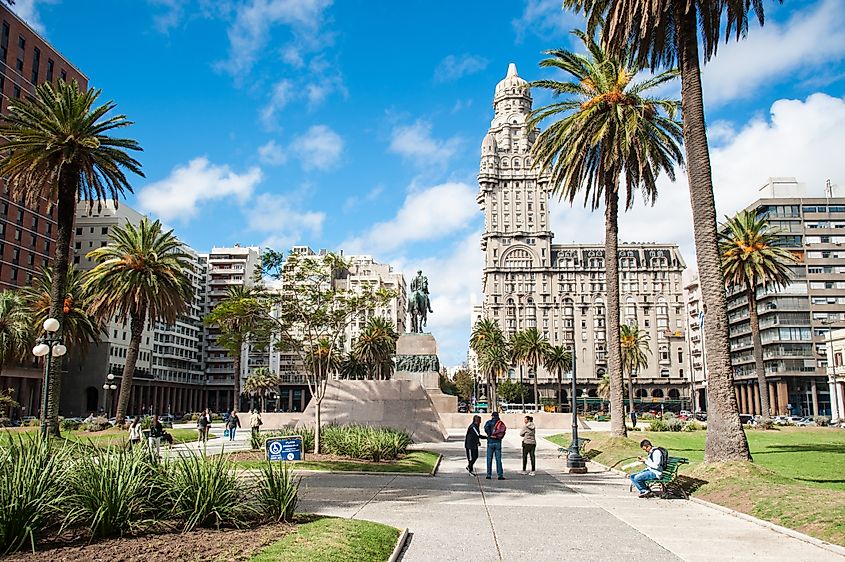
Uruguay, supported by a well-educated workforce and an export-focused agricultural sector, holds the second-highest GDP per capita (PPP) in South America at $37,190. Its main exports include meat, cellulose, wood, dairy, grains, pharmaceuticals, and services. It has the largest middle class in Latin America and the Caribbean, accounting for over 60% of the population.
From 2002 until 2015, successful macroeconomic management and a strong global demand for exports led to a sustained period of economic growth. Although growth slowed in subsequent years due to factors such as the COVID-19 pandemic and climate-related challenges like droughts, the economy rebounded in 2024, driven by exports and private consumption. While Uruguay stands out for its relatively high level of social equality within Latin America, inequality remains significant compared to other parts of the world.
3. Chile - $35,286 GDP/Capita (PPP)
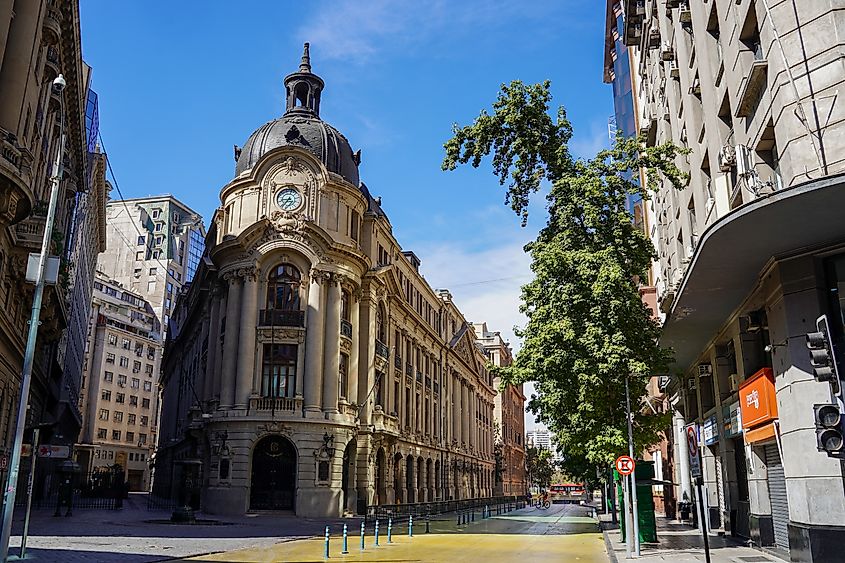
Chile, classified as a high-income country by the World Bank, has the third-highest GDP per capita (PPP) in South America at $35,286. Mining is one of Chile’s most important sectors, and the country ranks among the world’s largest exporters of copper, lithium, and iodine. In 2024, the country’s GDP increased by 2.6%, largely thanks to mining exports. Other significant industries in Chile’s economy include manufactured products, such as food processing, chemicals, and wood, and agriculture, such as grapes, blueberries, and plums.
Although unemployment decreased compared to 2023, it has not yet returned to pre-pandemic levels from 2019. Inflation also dropped from 7.6% in 2023 to 4.3% in 2024, though it remains above the Central Bank’s listed target of 3%. A decline in global demand, driven by shifting trade policies and rising uncertainty, could lead to a lower demand for exports and falling copper prices for Chile. Domestic risks include the upcoming November 2025 elections, which may impact investor confidence and contribute to increased currency fluctuations.
4. Argentina - $31,311 GDP/Capita (PPP)
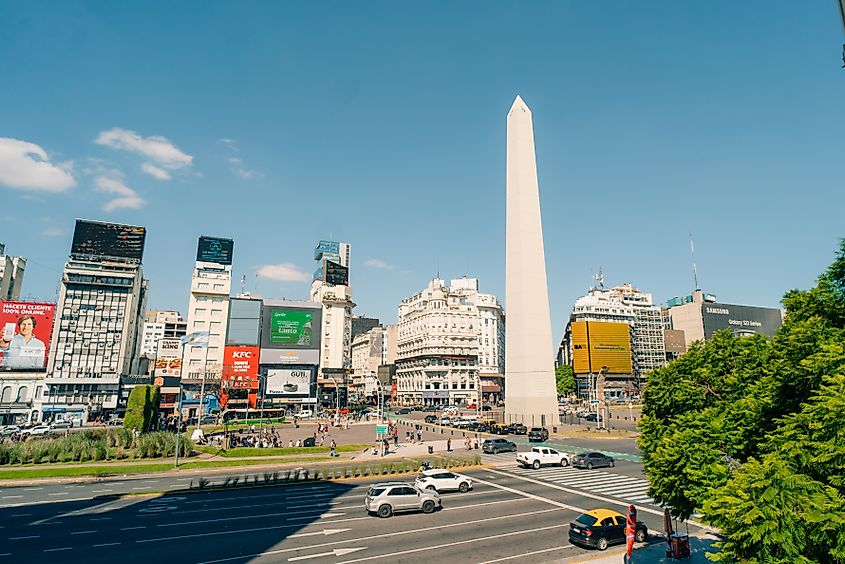
Argentina, with a GDP per capita (PPP) of $31,311, ranks as the fourth richest country in South America. Its nominal GDP exceeds $640 billion, placing it among the largest economies in Latin America. Argentina's energy and agricultural sectors play a major role in its economy, supported by abundant fertile land, gas, and lithium reserves. The country is also a leading food producer and manufacturer, with a strong focus on agriculture and livestock.
Despite the country’s abundance of natural resources, Argentina has faced significant economic challenges in recent years. By December 2023, monthly inflation had surged to 25.5%. In response, President Javier Milei’s administration launched a macroeconomic stabilization program aimed at reducing inflation. As of February 2025, inflation had dropped to 2.4%, showing early signs of progress. By 2025, Argentina projects a growth rate of 5.5%, largely driven by improved macroeconomic stability, increased investment in the energy sector, and favorable conditions for agriculture.
5. Brazil - $23,310 GDP/Capita (PPP)
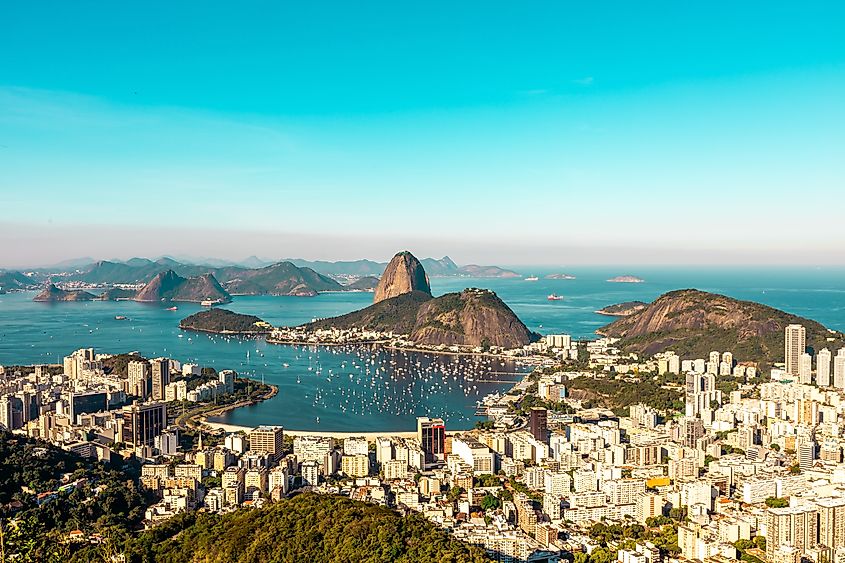
Brazil is a global leader in mining, agriculture, and manufacturing, with a GDP per capita (PPP) of $23,310. Among Brazil’s key mineral exports are iron ore, tin, bauxite, manganese, quartz, gold, and diamonds. The country also exports substantial amounts of steel, electronics, automobiles, and other consumer goods. In agriculture, Brazil ranks among the world’s top exporters of coffee, oranges, and cassava.
Over the past three years, Brazil’s economy has maintained steady growth, averaging over 3%, largely driven by private consumption and expansion in the agricultural and services sectors. However, despite its resource-rich land and overall economic progress, persistent systemic issues continue to fuel inequality. Racial and gender discrimination remain significant barriers, with Afro-Brazilians and Indigenous populations often facing limited access to quality education and healthcare, while women are more likely to experience workplace discrimination.
6. Colombia - $22,396 GDP/Capita (PPP)
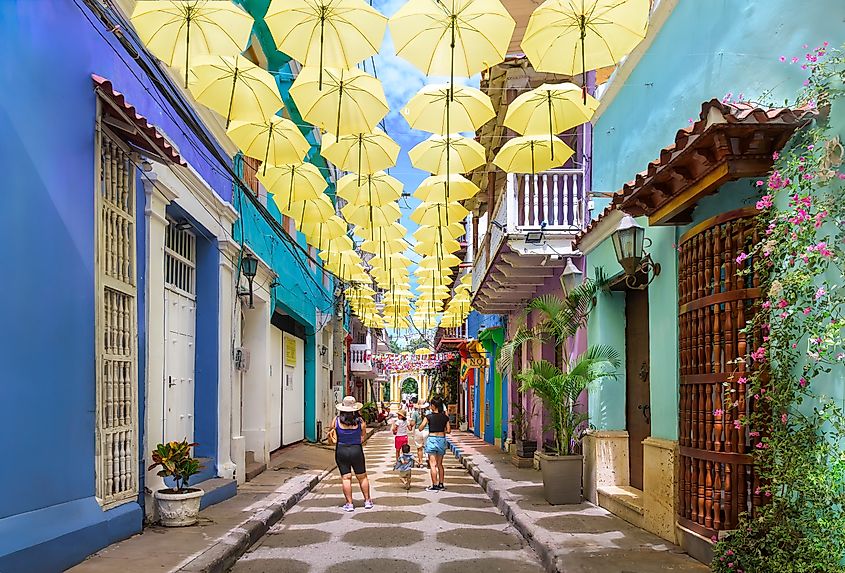
Strong fiscal rules, a modern inflation-targeting framework, and exchange rate flexibility have supported greater macroeconomic stability in Colombia, contributing to its current GDP per capita (PPP) of $22,396. In recent decades, its economy has become more diverse, with important industries including hydrocarbon fuel exploitation, metal mining, agriculture, and the manufacturing of domestic goods. Today, Colombia is one of the largest producers of domestically made appliances and electronics in South America.
In 2024, Colombia’s economy grew by 1.7%, an increase from the 0.7% growth recorded in 2023. By 2027, the growth rate is projected to reach 2.9%. Alongside this economic improvement, poverty has declined slightly, now at 31.3%. Although Colombia has maintained a steady growth rate, stagnant productivity has limited its economic potential and hindered efforts to reduce social and regional inequalities.
7. Suriname - $22,303 GDP/Capita (PPP)
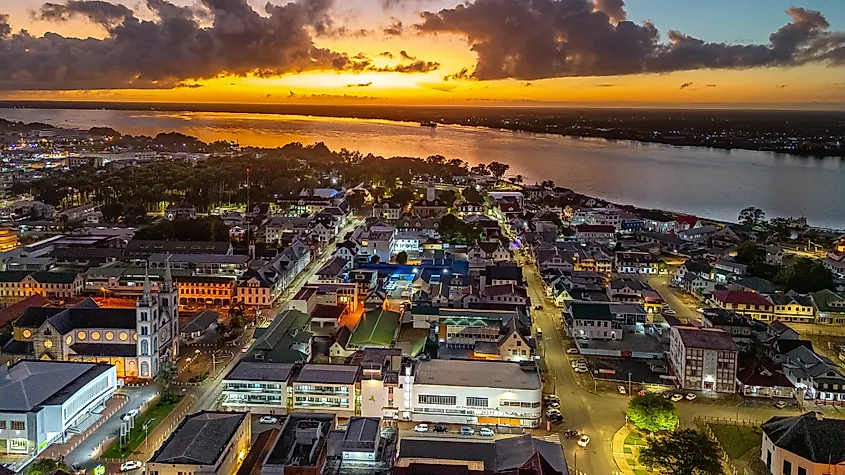
Suriname, a small country rich in natural resources, has a GDP per capita (PPP) of $22,303. Classified as an upper-middle income country by the World Bank, Suriname relies heavily on mining, which generates nearly half of public revenue. Gold dominates the sector, accounting for over 75% of the country’s total exports. As a result, Suriname’s economy remains highly vulnerable to external factors.
Between 2001 and 2014, high commodity prices fueled an average annual growth rate of 4.4%, positioning Suriname as one of Latin America’s fastest-growing economies. However, in 2015, a drop in mining revenues and a depletion of foreign reserves led to economic contraction, which was further exacerbated by the COVID-19 Pandemic in 2020. A Macroeconomic stabilization regime is crucial for the country’s future economic growth. Although the economy saw a moderate recovery in 2022, with real GDP growing by 2.4%, currency instability and high inflation continue to pose significant challenges.
8. Paraguay - $19,717 GDP/Capita (PPP)
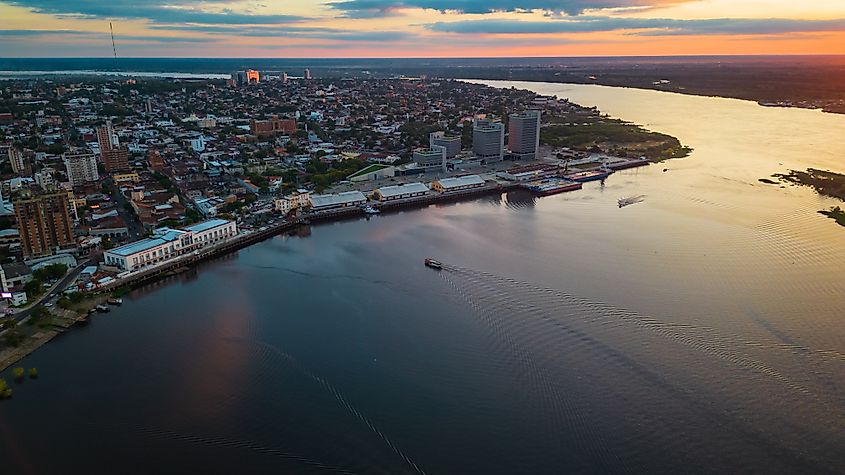
With an economy primarily based on agriculture, Paraguay has a GDP per capita (PPP) of $19,717. The agricultural industry employs about 25% of the workforce and represents about 20% of the country’s GDP. The country’s most significant crops include soybeans, corn, rice, wheat, rapeseed, sugarcane, sesame, peanuts, and cassava. Due to such a high dependence on agriculture, Paraguay is highly vulnerable to climate crises like floods, droughts, heat waves, and storms. Between 2019 and 2022, a series of droughts and other external shocks impacted economic growth and contributed to rising poverty rates.
To stimulate economic growth, Paraguay must invest in agricultural infrastructure, diversify its exports, and establish a strong disaster risk financing plan. Improving the quality of education and healthcare is also critical, as more than half of 15-year-olds did not meet minimum standards on the 2022 PISA assessment, which ultimately affects the country’s productivity and growth potential.
9. Peru - $18,980 GDP/Capita (PPP)
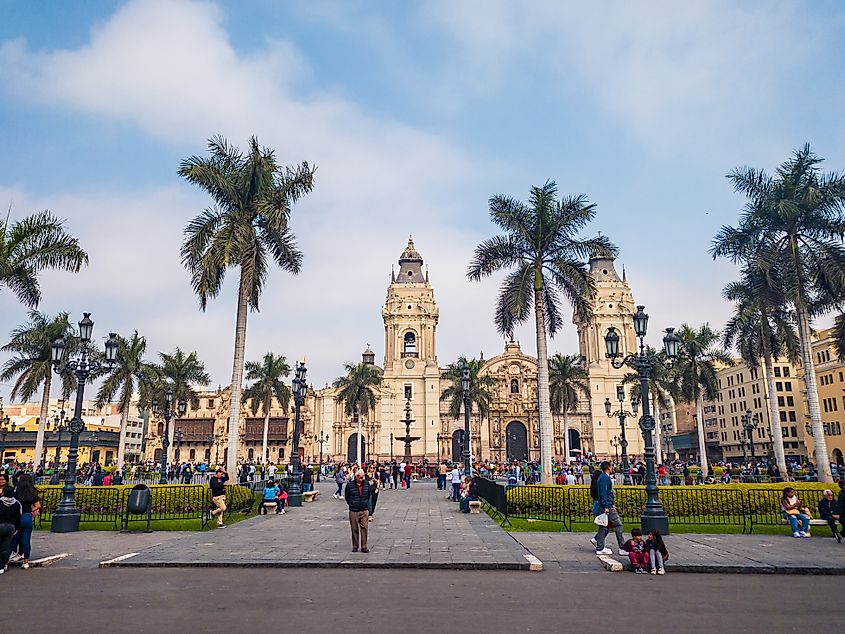
Over the past two decades, Peru has transformed into an upper-middle-income economy, with a current GDP per capita (PPP) of $18,688. Peru’s economic progress is largely attributed to strong fiscal and financial policies, reflected in its substantial reserves, low inflation, and manageable public debt. Its economic performance heavily depends on exports, with key products including copper, gold, zinc, textiles, pharmaceuticals, chemicals, services, manufactured goods, machinery, and fish meal. Its primary trade partners are the United States, China, the European Union, Chile, and Brazil.
Despite these strides, Peru has faced ongoing political instability in recent years, with six presidents since 2016. Many public institutions were also weakened during the COVID-19 pandemic, contributing to slower economic growth. In 2024, the economy showed signs of recovery, growing 3.3%, signaling a return to a more stable economy.
10. Ecuador - 16,805 GDP/Capita (PPP)
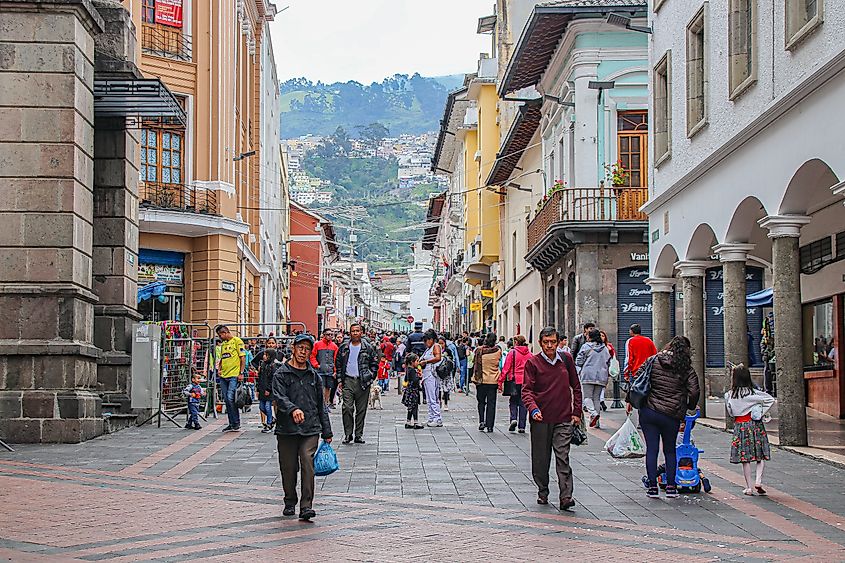
Ecuador has faced significant economic challenges in recent years and currently has a GDP per capita (PPP) of $16,805. In 2024, the country’s economy contracted by approximately 2.5%, which can largely be attributed to energy shortages, increased rates of violence, and political volatility. Ecuador also experienced its worst drought in sixty years, leading to nationwide electricity rationing. Coupled with rising violence, this energy crisis resulted in declines in private consumption and investment, which in turn slowed activity in the manufacturing and services sectors. With over half of Ecuador’s workforce employed in the informal sector, creating quality jobs is essential for increasing economic growth.
Despite these setbacks, the export sector grew, driven by increased shipments of fishery and agricultural products. Some of Ecuador’s principal exports include oil, shrimp, gold, bananas, and other agricultural goods. As of 2022, crude oil represented roughly 27% of the country’s total export value, largely exporting to North America, Asia, and other Latin American countries.
Sound macroeconomic programs and strong fiscal policies have helped many of these countries reduce poverty and drive economic growth. While challenges remain, such as political uncertainty, rising climate-related disasters, and industrial diversification, most have continued to grow, particularly in the aftermath of the COVID-19 pandemic’s instability and inflation. Some countries, such as Guyana, Uruguay, and Chile, have even earned the status of high-income countries, per the World Bank. As global and local conditions continue to shift, how these countries adapt will shape the continent’s economic trajectory in the coming years.
Countries in South America Ranked by GDP/Capita (PPP)
| Rank | Country | GDP/Capita (PPP) |
|---|---|---|
| 1 | Guyana | $94,189.30 |
| 2 | Uruguay | $37,190.13 |
| 3 | Chile | $35,286.47 |
| 4 | Argentina | $31,311.01 |
| 5 | Brazil | $23,309.63 |
| 6 | Colombia | $22,396.00 |
| 7 | Suriname | $22,303.23 |
| 8 | Paraguay | $19,717.19 |
| 9 | Peru | $18,980.19 |
| 10 | Ecuador | $16,805.02 |
| 11 | Bolivia | $11,439.02 |
| 12 | Venezuela | $8,785.45 |
Discover More Rich Countries
The Richest Countries In The World
Liechtenstein, Singapore, and Luxembourg stand out as the richest countries for 2025, with GDP/Capita in PPP of $201,112, $156,969, and $152,395, respectively.
The Richest Countries In Asia
Singapore, Qatar, and Brunei are currently the richest countries in Asia for 2025, with GDP/Capita in PPP of $156,969, $122,283, and $94,472, respectively.
The Richest Countries In North America
The United States, Canada, and Panama are the richest countries in North America for 2025, with GDP/Capita in PPP of $89,599, $65,500, and $43,651, respectively.
The Richest Countries In Europe
Liechtenstein, Luxembourg, and Ireland rank as the three richest countries in Europe for 2025, with a GDP/Capita in PPP of $201,112, $152,395, and $147,878, respectively.
The Richest Countries In Africa
Seychelles, Mauritius, and Gabon are the richest countries in Africa for 2025, with GDP/Capita in PPP of $42,110, $33,024, and $24,738, respectively.
The Richest Countries In South Asia
The Maldives, Bhutan, and India are the richest countries in South Asia for 2025, with GDP/Capita in PPP of $36,066, $17,722, and $12,101, respectively.











